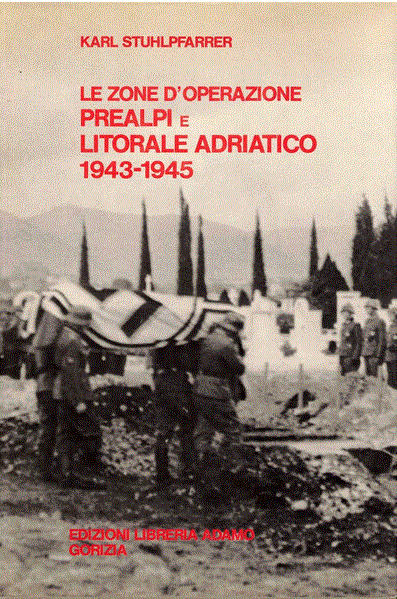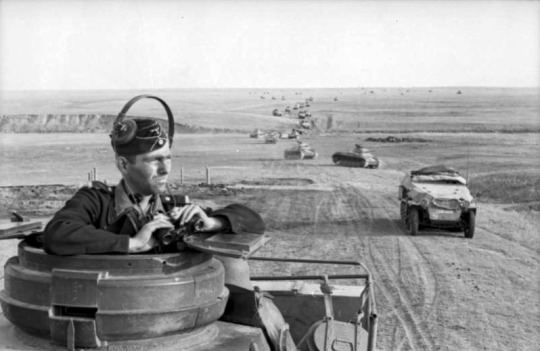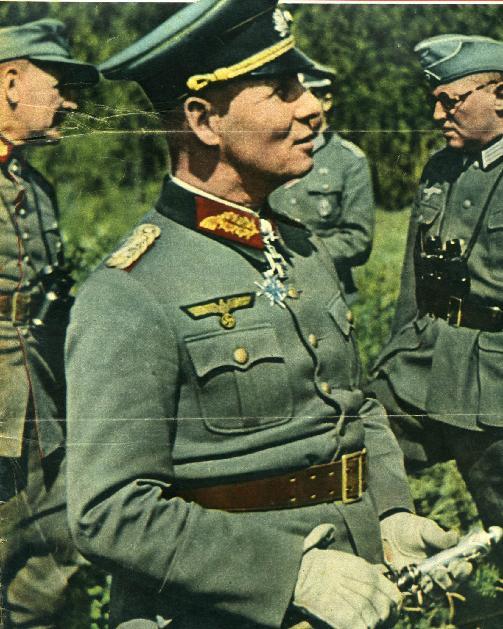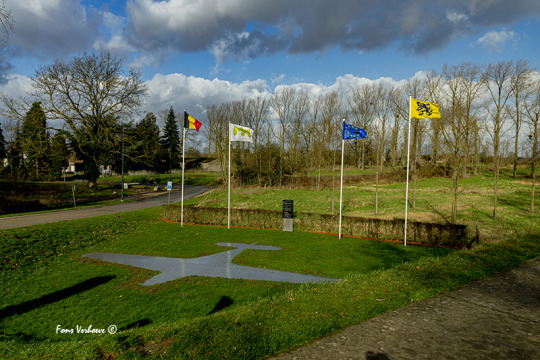#Heeresgruppe B
Text
Il Generale Kübler si arrese con tutto il suo comando nel maggio del 1945 all’esercito jugoslavo titino e come Rainer fu processato a Lubiana
Il primo elemento responsabile del controllo e della sicurezza del territorio fu proprio la Wehrmacht, più precisamente l’Heeresgruppe B <5 di Rommel. I primi giorni dopo l’occupazione furono proprio i diversi comandanti di piazza ad assumere il controllo del territorio e ad emanare le prime ordinanze per la sicurezza.Il 12 settembre 1943 l’OKW incaricò il Feldmaresciallo Rommel di costituire una…

View On WordPress
#1943#1944#1945#A.O.K. 14#Adriatico#alleati#Befehlshaber#Cherso#fascisti#fiume#Giorgio Liuzzi#Gorizia#Heeresgruppe B#isla#Istria#Jugoslavia#Krk#Litorale#Lubiana#Ludwig Kübler#Lussino#Ozak#partigiani#Pola#Sicherungsgebiet Adriatisches Küstenland#tedeschi#terrore#Trieste#Udine#Wehrmacht
0 notes
Text
Il Generale Kübler si arrese con tutto il suo comando nel maggio del 1945 all’esercito jugoslavo titino e come Rainer fu processato a Lubiana
Il primo elemento responsabile del controllo e della sicurezza del territorio fu proprio la Wehrmacht, più precisamente l’Heeresgruppe B <5 di Rommel. I primi giorni dopo l’occupazione furono proprio i diversi comandanti di piazza ad assumere il controllo del territorio e ad emanare le prime ordinanze per la sicurezza.Il 12 settembre 1943 l’OKW incaricò il Feldmaresciallo Rommel di costituire una…

View On WordPress
#1943#1944#1945#A.O.K. 14#Adriatico#alleati#Befehlshaber#Cherso#fascisti#fiume#Giorgio Liuzzi#Gorizia#Heeresgruppe B#isla#Istria#Jugoslavia#Krk#Litorale#Lubiana#Ludwig Kübler#Lussino#Ozak#partigiani#Pola#Sicherungsgebiet Adriatisches Küstenland#tedeschi#terrore#Trieste#Udine#Wehrmacht
0 notes
Photo


Case Blue (German: Fall Blau) was the German Armed Forces' plan for the 1942 strategic summer offensive in southern Russia between 28 June and 24 November 1942, during World War II. The objective was to capture the oil fields of Baku (Azerbaijan SSR), Grozny and Maikop for two purposes: to enable the Germans to re-supply their low fuel stock and also to deny their use to the Soviet Union, thereby bringing about the complete collapse of the Soviet war effort.
After Operation Barbarossa failed to destroy the Soviet Union as a political and military threat the previous year, Adolf Hitler, the Führer of Nazi Germany, recognised that Germany was now locked in a war of attrition, and he was also aware that Germany was running low on fuel supply and would not be able to continue attacking deeper into enemy territory without more stock. With this in mind, Hitler ordered for the preparation of offensive plans for summer 1942 to secure the Soviet oil fields in the Caucasus. The operation involved a two-pronged attack: one from the Axis right flank against the oil fields of Baku, known as Operation Edelweiss, and one from the left flank to protect the first attack, moving in the direction of Stalingrad along the Don River, known as Operation Fischreiher.[10]
Army Group South (Heeresgruppe Süd) of the German Army was divided into Army Groups A and B (Heeresgruppe A and B). Army Group A was tasked with fulfilling Operation Edelweiss by crossing the Caucasus mountains to reach the Baku oil fields, while Army Group B protected its flanks along the Volga by fulfilling Operation Fischreiher. Supported by 2,035 Luftwaffe aircraft and 1,934 tanks and assault guns, the 1,570,287-man Army Group South began the offensive on 28 June, advancing 48 kilometers on the first day and easily brushing aside the 1,715,000 Red Army troops opposite, who falsely expected a German offensive on Moscow even after Blau commenced. The Soviet collapse in the south allowed the Germans to capture the western part of Voronezh on 6 July and reach and cross the Don river near Stalingrad on 26 July. Army Group B's approach toward Stalingrad slowed in late July and early August owing to constant counterattacks by newly deployed Red Army reserves and overstretched German supply lines. The Germans defeated the Soviets in the Battle of Kalach and the combat shifted to the city itself in late August. Nonstop Luftwaffe airstrikes, artillery fire and street-to-street combat completely destroyed the city and inflicted heavy casualties on the opposing forces. After three months of battle, the Germans controlled 90% of Stalingrad on 19 November.
In the south, Army Group A captured Rostov on 23 July and swept south from the Don to the Caucasus, capturing the demolished oilfields at Maikop on 9 August and Elista on 13 August near the Caspian Sea coast. Heavy Soviet resistance and the long distances from Axis sources of supply reduced the Axis offensive to local advances only and prevented the Germans from completing their strategic objective of capturing the main Caucasus oilfield at Baku. Luftwaffe bombers destroyed the oilfields at Grozny but attacks on Baku were prevented by the insufficient range of the German fighters.
The Allies were concerned about the possibility of German forces continuing to the south and east and linking up with Japanese forces (then advancing in Burma) in India. However, the Red Army defeated the Germans at Stalingrad, following Operations Uranus and Little Saturn. This defeat forced the Axis to retreat from the Caucasus in order to avoid getting cut off by the Red Army, which was now advancing from Stalingrad towards Rostov in order to achieve the cut-off. Only the Kuban region remained tentatively occupied by Axis troops.
https://en.wikipedia.org/wiki/Case_Blue
1 note
·
View note
Photo

Generalfeldmarschall Erwin Rommel in Normandy. Behind him is Generalleutnant Dr.-Ing. Wilhelm Meise (General der Pioniere im Heeresgruppe B)
12 notes
·
View notes
Text
Akkg
Mann und Fruchtbarkeit - Kinderwunsch erf. In einer Studie unfein dem Jahr 2010 hat der sich insbesondere die Komposition aus L-Arginin und Pinienrindenextrakt als wirksame Behandlungsmethode jener Erektionsstörungen erwiesen. Pinienrindenextrakt vermag aus den Rinden jener Seekiefer hergestellt und weist neben Polyphenolen und Catechinen auch einen hohen Beitrag an oligomeren Procyanidinen ( OPC ) auf.
Arginin (im Fachterminus auch L-Arginin genannt) ist eine nicht essentielle Aminosäure - was soviel bedeutet, dass unser Körper sie auch selber fertigen kann oder sie durch die Nahrung aufnimmt. Bei Stress, starker körperlicher Kick (umgangssprachlich), nach hartem Training oder aber Krankheiten kann es stattfinden, das Arginin zur Mangelware wird und wir in unseren Leistungen - zum Sport, im Job ferner auch im Bett - deutlich abbauen. In von Studie der Universtät Exter aus dem Jahr 2010 konnte nachgewiesen werden, dies Arginin die sportliche Verdienst um bis zu 20 Prozent erhöhen kann. Die Ursache hierfür ist, dass Arginin die Freisetzung vonseiten Wachstumshormonen födert, damit welchen Muskelaufbau anregt und die gleich lange zeitspanne in anspruch nehmend auch das Immunsystem stärkt. Und auch beim An gewicht verlieren kann Arginin helfen - dazu später mehr.
Eine weitere positive Einzelschritt ist die Stärkung des Immunsystems, die ebenfalls in unterschiedlichen Studien mehrfach gut nachgewiesen wurde. Die Aktivität der Abwehrzellen wird signifikant erhöht. Sogar die Kollagenbildung, die im Rahmen ihrer Wundheilung wichtig ist, wird positiv stimuliert. Auch andere Aminosäuren können übrigens geeignet sein, wenn man ein effektives Trainings- und Ernährungsprogramm anstrebt.
Für eine gesunde Haut und glänzendes Fell Ihres Hundes sollen laut Hersteller da Inhaltsstoffe Vitamin A, Biotin, Fischöl, Linolsäure und Zink sorgen. L-Carnitin hingegen baut körpereigene Fettreserven ab, reduziert die Fettspeicherung und soll Ihren Hund dabei unterstützen, sein Idealgewicht einzuhalten. Das funktioniert gewiss nur, wenn Sie sich an die entsprechende Fütterungsempfehlung halten und Ihren Vierbeiner nicht übermäßig mit Leckerlis verwöhnen.
Das Produkt enthält außer L-Arginin keine sonstigen Bestandteile oder Zusätze, es handelt sich hierbei also um ein reines L-Arginin Präparat. Außerdem ist das Präparat auch für Allergiker anwendbar, da es frei von Laktose, Gluten oder sonstigen Allergenen ist. Die Kapselhülle besteht aus Rindergelatine, weshalb das Präparat nicht zu gunsten von Veganer geeignet ist.
Darüber hinaus Ihrem Kundencenter können Sie jederzeit online Ihre hinterlegten Daten einsehen und updaten (umgangssprachlich) sowie Ihr Passwort ändern und eine Sicherheits-Mobilfunknummer angenehm Schutz Ihres Kontos erlahmen: Melden Sie sich dort einfach mit Ihren Nutzerdaten - Ihrer E-Mail-Adresse und Ihrem Passwort - an.
Purina GOURMET liefert ein ausgesuchtes Katzen-Nassfutter mit verschiedenen Fleischsorten aus Kaninchen, Lachs, Rind des weiteren Huhn. Die hochwertigen Filetstreifen in Sauce gewährleisten eine artgerechte Katzenfütterung, die zu allem überluss dazu sauber ist afgrund der 60 Portionsbeutel. Nicht ruhig Hersteller gewährleistet dieses Futter ein ausgeglichenes Verhältnis an den wichtigen Nährstoffen, Vitaminen und Mineralstoffen.

Eine interessante Lösung zum Laden hat B& Play für sein erstes kabelloses In-Ear-Modell, den Beoplay H5. Nutzer legen die Kopfhörer in einen geringen Ladewürfel. Dort werden diese mit Magneten fixiert, um nicht herauszufallen. Kostenpunkt: 250 Euro.
Vier Monate später ist die Schlacht entschieden Und die Wehrmacht in der Defensive. Sowjetische Granaten und jener eisige Winter werfen die Armeen der Heeresgruppe Zentrum Hunderte Kilometer nach Westen zurück. Dabei dringt die Wehrmacht im Herbst bis heute bis in die Vororte der russischen Hauptstadt ein.
In den sozialen Medien tüftelten die "Riverdale" -Fans gemeinsam daran, ebendiese Darsteller am besten zu gunsten von die jungen Versionen der Eltern geeignet wären. Aber The CW suchte bei weitem nicht lange nach neuen Darstellern, sondern recycelte mehr oder aber weniger den bestehenden Cast.
2 notes
·
View notes
Photo

“Taifun”
Toelichting monument in Vucht waar wij als loopvrienden "Die Vier von der Tankstelle" afgelopen dinsdag 11 februari 2020, langs kwamen. Het monument bestaat uit een aluminium plaat in de bodem die de vorm van een vliegtuig voorstelt.
Op 10 januari 1940 steeg een Duits verbindingsvliegtuig van het type Messerschmitt Bf 108 (Taifun) op van het vliegveld in Münster met bestemming Keulen. Aan boord bevonden zich de piloot, Major Erich Hönmann, en een passagier Major Helmut Reinberger. Deze laatste was op weg naar een stafbespreking van de Duitse 7.Flieger-Division in Keulen. De piloot raakte in de mist de weg kwijt en moest vanwege brandstofgebrek een noodlanding maken. De noodlanding lukte en de beide inzittenden overleefden de klap. Ze wisten toen niet dat ze waren terechtgekomen op Belgisch grondgebied, vlakbij Maasmechelen, een plaatsje ongeveer 15 km ten noorden van Maastricht.
Van een grenspost in de buurt kwamen soldaten op de crash af en zagen een man in een uniformjas bezig papieren te verbranden. Het vuurtje werd uitgetrapt en de restanten van de documenten werden in beslag genomen. De beide Duitse majoors werden meegenomen voor ondervraging. Op de commandopost deed de passagier nog een poging de om documenten te bemachtigen met de bedoeling ze te vernietigen. Door snel handelen van een Belgische kapitein kon dit voorkomen worden. Het was niet verwonderlijk dat Major Reinberger zo zijn best deed. De documenten bleken de Duitse operationele bevelen voor de Duitse Heeresgruppe B te zijn voor de inval in België en Nederland: “Fall Gelb”.
(14 februari 2020)
0 notes
Text
Ardennes December 16 LXVII. Armeekorps Stopped
LXVII. Armeekorps stopped on the northern flank
On the right wing, Generalleutnant Otto Hirtzfeld's LXVII. Armeekorps (sometimes called Korps Monschau), commanding 272. and 326. Volksgrenadier-Divisions, appeared to have a fairly feasible task by comparison with the far-flung 6. Panzer-Armee as a whole. the 32. Volksgrenadier-Div. was to attack with two of its regiments on either side of Monschau and push forward astride the Eupen-Monschau road. On the left, its third regiment was to advance towards Kalterherberg, while on the right the 272. Volksgren.-Div. was to attack north-west through Konzen to gain the high ground stretching as far as the River Vesdre. Along the line of the Vesdre, between Eupen and Rötgen, LXVII. Armeekorps' two divisions would then form the eastern part of the defensive front shielding 6.Panzer-Armee's right flank. Accoring to the Heeresgruppe B daily situation maps, the 272. Volks-Grenadier-Division possessed about ten assault guns, but those intended for the 326. Volks-Grenadier-Division were said by the divisional commander, Oberst Erwin Kaschner, to have been 'taken away from the division, not having been employed by it owning the situation and the terrain difficulties.'
Yet although LXVII. Armeekorps' task seemed feasible enough, Hitzfeld simply did not have the strength required. Because of intense American pressure around Kesternich the attack by 272.VGD had to be scrubbed, and one of 326.VGD battalions had to be sent to help restore the line. When another battalion failed to reach the assembly area in time for the attack, that left Hirtzfeld with a single, much depleted division to with which was to take Monschau!
Oposite, the Höfen - Monschau sector was held by the US 3rd battalion of the 395th Infantry Regiment and elements of the 38th Cavalry Reconnaissance squadron supported by artillery and self propelled tank-destroyers.
At the end of the Artillery barrage erupted along the entire 6.Panzer-Armee front early December 16, the ancient timber framed buildings of Monschau had been spared destruction as specified by Model. The Grenadiers suffered heavily in frontal attacks against the well-organized American positions. Moving forward through the mist as first light they closed with the defenders time and again almost at point blank range - in at least three verified instances toppling into the foxholes from where they were being fired upon. A renewed attempt was made, but with no greater success and, when the troops were withdrawn to their start-line that evening, Oberst Kaschner put their losses at around 20 percent.
#LXVII. Armeekorps#326. Volksgrenadier-Divisions#272. Volks-Grenadier-Division#Heeresgruppe B#US 3rd battalion of the 395th Infantry Regiment#8th Cavalry Reconnaissance squadron#Monschau#Höfen#Unternehmen 'Wacht am Rhein' Begins#WWII History ETO
2 notes
·
View notes
Text
Unternehmen 'Wacht Am Rhein' Begins!
6. PANZER-ARMEE
When 'Wacht am Rhein" began early on 16 December 1944 there were eight hours and six minutes of daylight ahead, from sunrise at 8.29 a.m. to sunset at 4.35 p.m. CET (taking Bastogne as reference point) with just another thirty-eight minutes of twilight at both dawn and dusk: a short winters day.
For the Americans, caught off guard, the shock of the opening phase of the offensive was to turn into a defeat for a number of front-line units, whilst for the Germans, striking such a stunning blow brought about the resurgence in moral that possessed undertone of the blitzkrieg of former years.
At 12.45 p.m. CET a report from Heeresgruppe B savoured some of the American radio messages it quoted: 'We have been bypassed. What should we do?'
'The guns are useless now. What should we do.' Reply: 'Blow up the guns' , and We are withdrawing six miles to build up a new front line."
Hitler once more sensed the excitement of victory. Placing a call to Heeresgruppe G, south of the offensive, he spoke with its commander, General der Panzertruppen Hermann Balck. His voice taut with emotion, Hitler rasped, 'Balck, Balck, everything has changed in the West! Success-complete success-it's now in our grasp!'
For the planners of 'Wacht am Rhein', however, indications had started to come in after only a few hours that things were not going according to plan.
#Unternehmen 'Wacht am Rhein' Begins#Heeresgruppe B#General der Panzertruppen Hermann Balck#WWII History ETO#Hitler's Last Gable in the West
3 notes
·
View notes
Text
German Order of Battle for Unternehmen Wacht am Rhein (part 2)
HEERESGRUPPE B RESERVE AND OTHER UNITS
The single division in reserve on the eve of the Ardennes offensive over which Heeresgruppe B had direct control over was 79. Volks-Grenadier-Division.
79. Volks-Grenadier-Division
The original 79. Intraterie-Division had been destroyed during the summer around Jassy in Romania. The new 79. Volks-Grenadier-Division came into being on October 27 by a change in number of 586. VGD, which was assembling at Thorn (Torun) in Poland since September. When it left for the West on December 11 the division was in poor shape, and lacking in transport and with neither its anti-aircraft nor anti-tank units. Its Stu.Gesch.Kp.1179, equipping with Jagdpanzer 38(t) at Mielau, failed to appear in time.
Engineers
The range of engineer units available to Heresgruppe B included construction
engineers (baupionier-battalions) and others required for different tasks-for instance, Schneeräum-Kompanie 226 to carry out snow clearance. Different altogther were the combat or assault engineers (pionier-battalions) and such units as the Panzer-Pionier-Kompanie 813 equipped with miniature wire-guided tracked 'Goliath' demolition charge carriers.
Four bridging columns were allotted: Brückenkolonne or Brüko 888, Brüko 921, Brüko 969, Brüko 956, each with standard Brückengerät B steel pontoon briding equipment capable of spanning a fiver fifty meters wide and bearing up to ten tons, or half width and taking double the weight. (Brückengerät J pontoon bridging equipment which could span up to eighty-five meters and take up to 30 tons-or fourty meters and seventy tons-was also in service with the armies)
There was also two labor regiments of OT-Brigade 5 belonging to the Reich's utility service and semi-military, all-purpose construction and engineering concern, Organization Todt. Taking OT-Regiment 2 as an example, it consisted at that time of 1,500 German and 800 foreign workers.
Artillery
A unit of long-range railway guns was alloted to Heeresgruppe B. This was the Eisenbahn-Artillerie-Abteilung 725, comprising three batteries: E-Battr. 674, with one 24cm Th.Br. K gun having a range of 28 kilometers; one 24cm Th.K. gun, range 28 kilometers, and one 27.4 cm K 592(f) gun, range 30 kilometers; E-Bttr. 668, with one 28cm K 5 gun, range 60 kilometers and E-Battr. 749 with two 28cm K 5 gl. which had a purported range of up to 125 kilometers!
#German Order of Battle for Unternehmen Wacht am Rhein#HEERESGRUPPE B#79. Volks-Grenadier-Division#Its Stu.Gesch.Kp.1179#Schneeräum-Kompanie 226#Brüko 888#Brüko 921#Brüko 969#Brüko 956#OT-Brigade 5#OT-Regiment 2#Eisenbahn-Artillerie-Abteilung 725#E-Battr. 674#E-Bttr. 668#E-Battr. 749#WWII History ETO#Hitler's Last Gamble in the West
3 notes
·
View notes
Text
German Order of Battle for Unternehmen Wacht am Rhein (part 1)
OKW RESERVE
Nine units appear in the Order of Battle of Heeresgruppe B as being in OKW reserve, of which five were being commited to 'Wacht am Rhein' by Heeresgruppe B and the other four by Heeresgruppe G, mainly for Operation "Nordwind". By comparison Heeresgruppe B reserve consisted of one division-an indication of the degree of initiative left to von Rundstedt and his senior commanders.
The five were:
Führer-Begleit-Brigade
As the Führer-Begleit-Battalion, the brigade originated in 1939 as a motorized escort unit for for the Führer and from 1941 was stationed near the Führerhauptquartier at Rastenburg. Elements were sent to the Eastern Front to gain battle experience but Russian pressure soon cause the bulk of the battalion to be sent into action, leaving only a small detachment on guard duties at the Wolfsschanze. In May 1944 it was expanded into a regiment and in November into the Führer-Begleit-Battalion. It soon moved west under the command of Oberst Otto Remer and detrained in the Daun area of the Eifel between December 10 and 13. Now organized as a fighting unit it contained:
a panzer regiment, an anti-aircraft regiment, and two motorized battalions of grenadiers plus a bicycle battalion, Gren.Btl.z.b.V. 928. Its panzer regiment was still embrionic: II. Abteilung of Panzer Regiment of 'Gross Deutschland' having been transferred to the brigade as its 1st Battalion, whilst Sturmgeschütz Brigade 200 acted as a substitute for its 2nd. According to the situation maps, on December 17 Panzer-Regiment 'Führer-Begleit-Battalion' then comprised: 1. Abteilung with twenty-three Panzer IVs and twenty sturmgeschütz: and (in place of II. Abteilung) 1. Abteilung with twenty-eight Sturmgeschütz.
Führer-Grenadier-Brigade
This unit originated in April 1943 as Führer-Grenadier-Battalion and fought as such on the Eastern Front. Raised to brigade strength in April 1944 it was reorganized as as Fallingbostel in September as by mid-October was committed to 4.Armee against a Soviet breakthrough near Gumbinnen in East Prussia. At the end of November it withdrew to Cottbus for rest and refit. When the brigade moved moved west between December 11 and 17 its composition was: a panzer regiment, an anti-aircraft battalion, an artillery battalion, a panzergrenadier regiment of two motorized battalions and one bicycle battalion, Gren.Btl.z.b.V. 929.
The brigade commander was Oberst Hans-Jochim Kahler. On December 17, according to the situation maps, Panzer-Regiment "Füh.Grenadier-Brig." comprised:
1. Abteilung with eleven Panzer IVs and thirty-seven Panthers (a handful of them Jagdpanthers); standing in for II. Abteilung was Stu.Art.Brig.911 with thirty-four Sturmgeschütz.
9. Volks-Grenadier-Division
The Original 9. Infanterie-Division had been formed in 1935 as one of the early Wehrmacht divisions and had fought in the West in 1940 and on the Eastern Front from 1941. Destroyed in Romania in August 1944, it had been written off on October 9. he 9.Volks-Grenadier-Division which came into being on the west coast of Denmark on October 13 thus bore no resemblance to the former experienced infantry division of old but resulted merely from from a change of number, having been formed as 584. Volks-Grenadier-Division at Esbjerg, where it had been assembling since September; its Stu.Gesch.Kp.1009 equipped with the Jadgpanzer 38(t) at Milowitz in Czechoslovakia. The division moved out on December 14 and scheduled to detrain at Gerolstein, to be in readiness west of the town on December 19.
167. Volks-Grenadier-Division
The 167. Volks-Grenadier-Division was another of those veteran divisions which disintegrated itself on the Eastern Front and which disappeared in August of 1944 with 8. Armee in Romania. What remained of it, Divisiongruppe 197, was refitted Dollersheim with the remnants of 17. Luftwaffe-Feld-Division, shattered in France, to become the 167. Volks-Grenadier-Division on September 2, its Stu.Gesch.Kp. 1167 issued with the Jagdpanzer 38(t)at Milowitz. The division was due to arrive in the Gerolstein area December 24.
3. Panzergrenadier Division
As 3. Infanterie-Division it fought in Poland and the West, becoming a motorized infantry division in October 1940. From the summer of 1941 it fought in the East until it was destroyed at Stalingrad. Reformed in south-west France 386. Infanterie-Division (mot.), it became 3. Panzergrenadier-Division in June 1943. It fought in Italy until late August 1944 when ordered to France to counter tyhe Allied threat in Lorraine and then moved up to the Aachen sector, being pulled out at the beginning of December. On December 10 the division's Panzer Abteilung 103 could field forty-one StuGs and its Panzerjäger-Abteilung 3 twenty-five Jagdpanzer IV/70s, although operational on the charts for the offensive the number of StuGs was put at twenty.
The other formations in the OKW reserve were 257. Volks-Grenadier-Division, 6. SS Gebirgs-Division, 11. Panzer-Division and 110. SS-Panzer-Division, none of which was commited as such, although elements(for instance part of SS-Panzer-Regiment 10) saw action with other units. The introduction of 11. Panzer-Division into the battle delayed by problems over its transfer to Heeresgruppe G in the south; a disagreement between von Rundstedt and the Heeresgruppe G commander, General Hermann Balck, about moving an entire Panzer division across a disjointed railway system, and such by December 18 the disruption was such that the move had to be called off.
All von Rundstadt's repeated requests for the deployment of these reserves were fruitless, except for both 9.VGD and 167. VGD which were ordered forward on December 23 albeit not released from OKW control. Three days later, when Model made another of his persistent demands to be allowed to make use of the OKW reserve-the armor specifically-he was given control of these two divisions. By this date the three divisions remaining in reserve were already earmarked for Operation 'Nordwind'.
#German Order of Battle for Wacht am Rhein#Oberkommando der Wehrmacht Reserve#Heeresgruppe B#Führer-Begleit-Brigade#Führer-Grenadier-Brigade#9. Volks-Grenadier-Division#167. Volks-Grenadier-Division#3. Panzergrenadier Division#Gren.Btl.z.b.V. 928.#Gren.Btl.z.b.V. 929#Stu.Art.Brig.911#1. Abteilung#Stu.Gesch.Kp.1009#its Stu.Gesch.Kp. 1167#Abteilung 103#Panzerjäger-Abteilung 3#WWII ETO#Hitler's Last Gamble in the West
5 notes
·
View notes